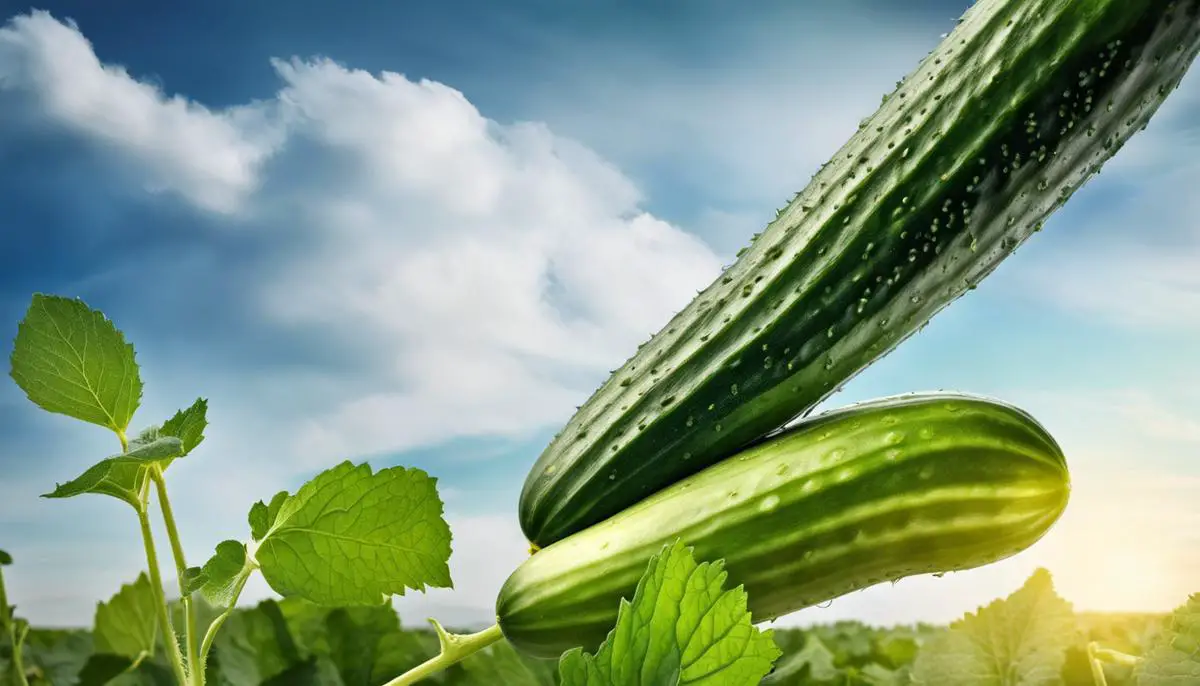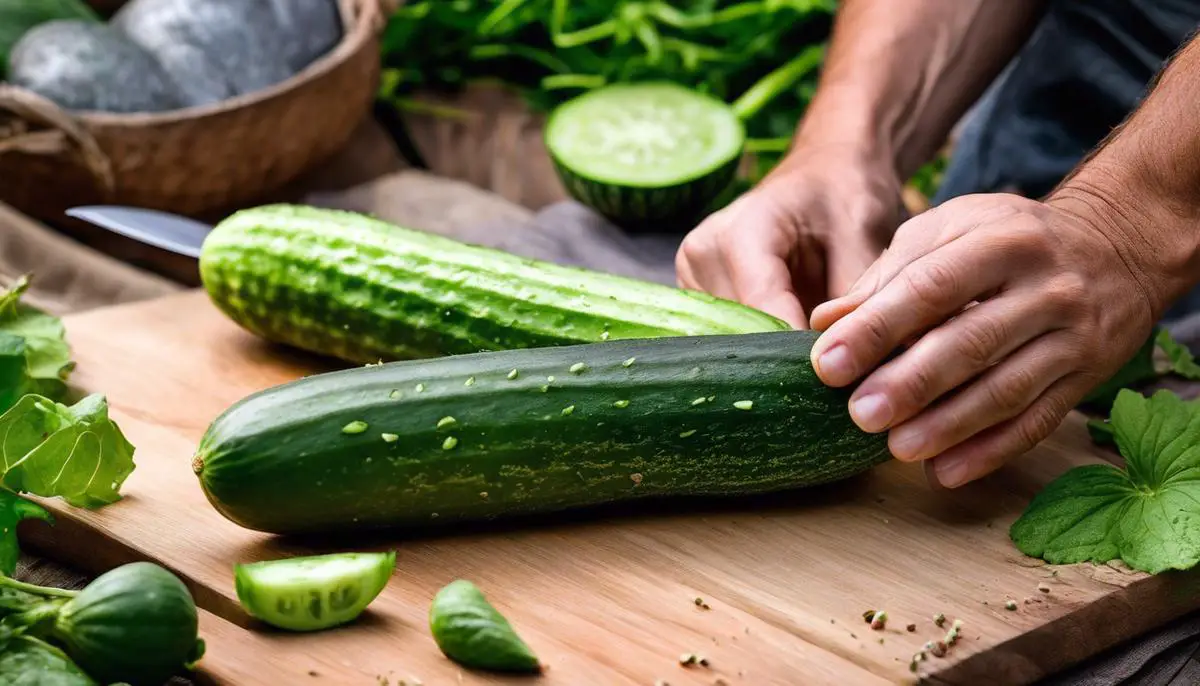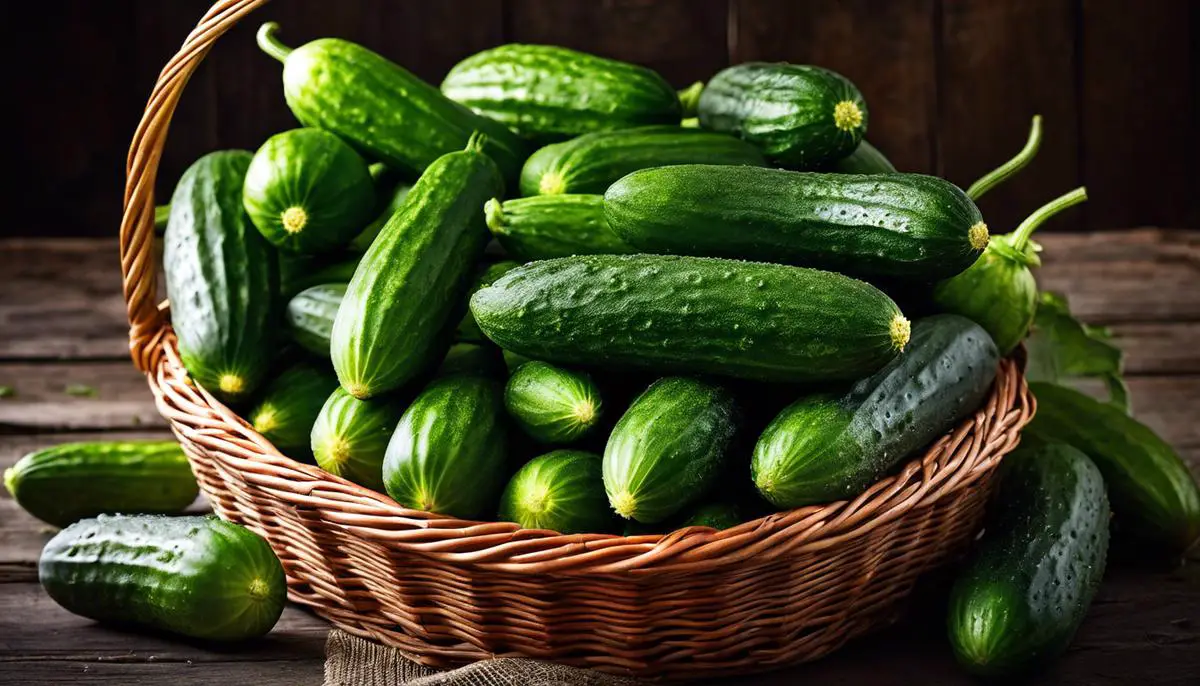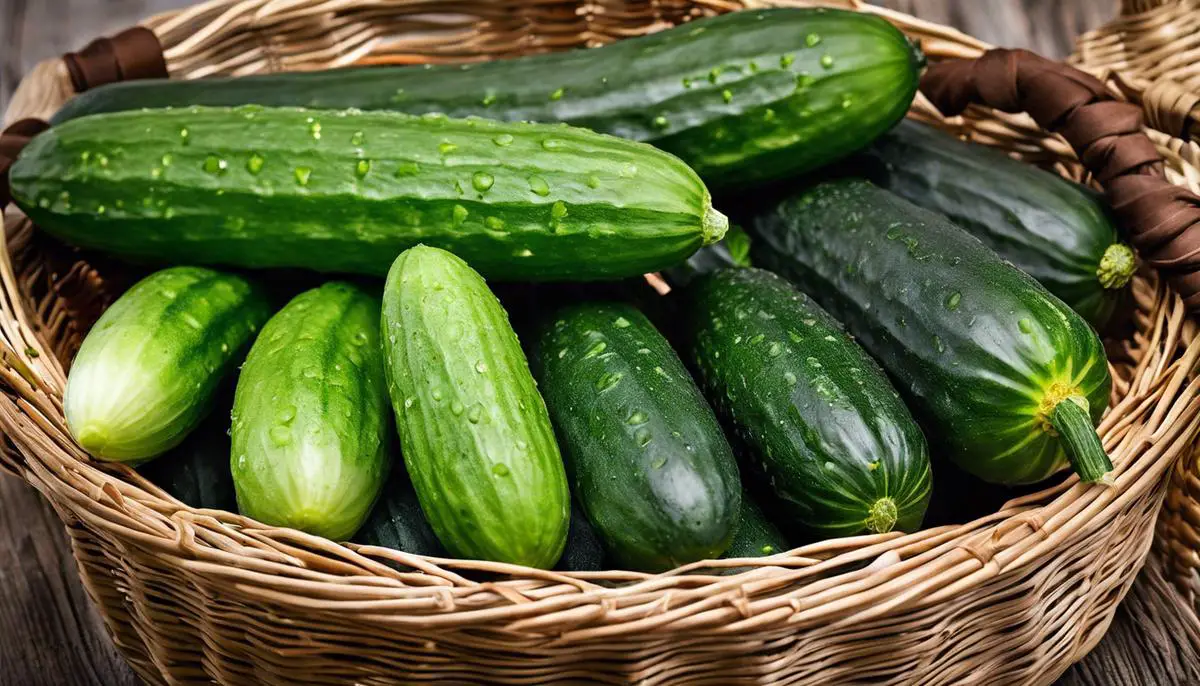Whether you’re catering to a burgeoning interest in home gardening or you’ve undertaken a full-fledged commercial endeavor, understanding all there is to know about cucumber harvesting can greatly improve the quality of your produce. This comprehensive guide will take you through the nuances of identifying mature cucumbers based on their size, color, and firmness, knowledge paramount to correctly deciphering the cucumber plant growth cycle. Moreover, you’ll gain a wealth of information on mastering the art of harvesting and handling these verdant vegetables with utmost care to prevent any damage or bruising. Lastly, not only will this guide enable you to comprehend the intricacies of post-harvest treatment, such as cleaning and drying, it also dives deep into correct storage methods to maintain the freshness of cucumbers and prevent spoilage longer than their usual shelf life.
Identifying Mature Cucumbers
Decoding the Perfect Timing: When Are Your Cucumbers Ready to Harvest?
You’ve spent countless days tending to your garden, nurturing your crops, and maintaining the perfect balance for growth. Among the lush green, one plant stands out with its bright, enticing vegetables, the cucumber. As gardening enthusiasts, we all understand the joy that springs from successful cultivation and that moment of triumph when you harvest the fruits, or in this case, vegetables of your labor. However, the key to getting the perfect cucumber from your garden concerns the timing of the harvest. But fret not, fellow green thumbs! This article will guide you on how to tell when cucumbers are ready for harvest.
Reader Poll: What online courses would interest you?
Getting the timing right is paramount. Harvesting too early can result in underdeveloped, bitter cucumbers. Wait too long, and the cucumbers can become overripe with a hard, yellowish skin which isn’t as pleasant to eat. Hence, pay close attention to the following cues to know when your cucumbers are just right.
Size Matters:
The standard slicing cucumbers usually mature when they grow to around 7 to 9 inches in length, while pickling cucumbers are perfect for harvesting when about 3 to 5 inches long. Remember, the size can vary depending on the variety of cucumber, so it’s always good to be familiar with the type you’re growing.
Look out for Color:
Healthy, fully grown cucumbers will usually be a vibrant medium to dark green. If you notice a drastic change in color, like yellow or white spots, it might mean your cucumber is over-ripe.
Subscribe to our newsletter!
Texture is Key:
The skin of a ripe cucumber should generally be firm and moderately thick, indicative of a crunchy texture. When you run your hand along the cucumber, it should feel relatively solid to the touch. Softness, wrinkling, or dimpling often signifies an overripe or unhealthy cucumber.
Count the Days:
While visual and tactile signs are essential, sometimes it’s as simple as keeping track of the days. Depending on the plant variety, cucumbers usually mature between 50-70 days after planting.
Finally, one quick tip is that the early morning is the best time to harvest those succulent cucumbers from your garden. They are usually well hydrated, crisp, and haven’t been exposed to the harsh afternoon sun yet.
So, fellow garden enthusiasts, put on your gardener hats and gloves. With these tips in mind, no longer will you have to guess when your cucumbers are ready. Rest assured, you will have the perfectly timed harvest, leading you to flavorful salads, refreshing drinks, or crunchy pickles. Straight from your garden to your plate, that’s the joy of gardening, isn’t it?

Harvesting and Handling Techniques
Cultivating your Green Thumbs: The Right Way to Harvest Cucumbers
From timing your harvest to picking out cucumbers at their prime ripeness, you’ve got half the harvest story under your belt. Let’s now dive into how to actually remove these cool, crunchy fruits from their plants without causing any damage.
To begin, it is crucial to handle your cucumber plants with care. These plants are susceptible to harm, yet they are the foundation of your hobby farm. Proper harvest techniques can make the difference between a robust yield and a small, unhealthy cucumber crop.
Equipped with gloves and a sharp garden knife or pruners, approach the cucumber plant gently. Gloves safeguard your hands from the prickly cucumber stalks, while sharp tools ensure a clean cut, minimizing damage to the plant.
Identify the stem of the ripe cucumber. This is where you’ll make your cut. However, resist the urge to pull, twist, or yank! Forceful actions can harm the vine, making it more susceptible to diseases and negatively impacting its future growth.
Instead, hold the cucumber firmly but not tightly, in one hand. With the other hand, sever the cucumber stem about a quarter-inch above the fruit with your tool of choice. Remember though, the keyword here is ‘sever’, not ‘hack’. A gentle squeeze of the pruners or a swift glide of the knife should be enough.
While at it, don’t forget to leave a small stub of stem on the cucumber. This isn’t mandatory but is a good practice. It helps slow down the fruit’s decomposition process, keeping your cucumbers fresh for longer.
Lastly, harvesting is a job best done frequently. Cucumbers can go from just-right to overripe seemingly overnight, especially in peak season. Frequent harvesting, every two days or so, not only rewards you with a persistent supply of fresh cucumbers but also encourages the plants to produce more.
Apart from implementing these techniques, the beauty of harvesting cucumbers also resides in our interaction with the natural growing process. Be vigilant. Look for signs of pests or diseases as you harvest. Treating these issues early ensures more fruitful cucumber seasons ahead.
So, there you have it. Equip yourself with the right tools, a gentle touch, and frequent rounds through your cucumber patch. Apply these techniques, and you’re on your way to a bountiful cucumber harvest. Happy harvesting!

Post-Harvest Treatment and Storage
Once your cucumbers are harvested flawlessly, their journey to your kitchen isn’t complete. Let’s dive into how to store your bounty to retain freshness for longer periods. One key point to remember — the cucumbers are still living after being harvested, their cells continue to breathe. This process will use up stored sugar reserves and cause loss in freshness over time, so our mandate is to slow down this process and maintain the freshest cucumbers we can.
To begin, never come straight from the garden to the refrigerator. As homegrown fruits and vegetables, cucumbers should be stored at room temperature, not in the fridge, contrary to popular belief. The refrigerator temperature is generally too low for cucumbers and could lead to chilling injuries, resulting in water-soaked spots, pitting, and accelerated decay.
Instead, find a cool (around 55°F), dark place with good ventilation for your cucumbers, preferably in a root cellar or basement. Don’t stack your cucumbers, arrange them in a single layer to ensure good air circulation around each one.
Another tip is to avoid storing your cucumbers with ripening fruits, such as apples or bananas. Fruits produce ethylene gas, a ripening agent that might hasten the spoilage of your cucumbers. Keep them in their separate space, and they’ll reward you with longer shelf life.
That being said, if you’ve washed your cucumbers or if they’re exceptionally ripe, you might need to store them in the refrigerator to prevent spoilage. Wrap them tightly in a soft, absorbent cloth and loosely in a plastic bag to maintain the right humidity level. The crisper compartment is an apt storage point in such cases.
If you plan to use your cucumbers within a day or two of harvest, they can be safely kept on the kitchen counter without loss of quality or freshness.
So, there you have it, all the information to store your harvested cucumbers. Embrace these easy habits, and you’ll be relishing fresh, crisp cucumbers long after their harvest!

Indeed, bringing in a fruitful cucumber harvest is not merely about planting seeds and watching them grow. It is a meticulous process that necessitates the understanding of visual indicators of ripeness, careful handpicking techniques, and considerate post-harvest handling. The knowledge of cucumber plant growth cycle also stands as a crucial piece in this jigsaw. As much attention should be paid to how cucumbers are stored post-harvest as to how they are harvested, for incorrect storage methods can lead to rapid deterioration. By learning these skills, you’ll be well on your way to elevating your cucumber game, all while beckoning in health, wellness, and the satisfaction of a hard-earned, fruitful harvest.

